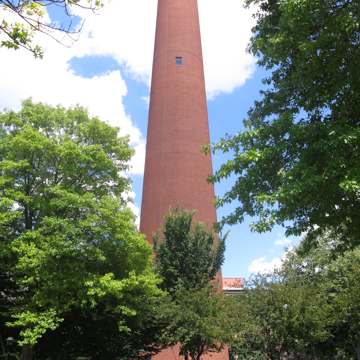When the old Phoenix Shot Tower in the Jonestown neighborhood was threatened with demolition in 1921, the citizens of Baltimore rallied to save this rare industrial artifact. The tapered and crenellated brick tower rose to a height of 215 feet, making it the tallest structure in the United States for nearly two decades after its completion in 1828. The height was a purely functional response to lead drop shot production methods based on Englishman William Watts’s 1782 patent. Molten lead was dropped from the top of the tower through a perforated metal plate, or colander, with holes sized according to the shot type desired (mainly for small game hunting). The round drops that naturally formed on the descent were collected and cooled in a water tank at the bottom, and then sorted, polished, and packed in twenty-five-pound sacks.
A fire in 1882 destroyed the tower’s interior, which was rebuilt, and shot production continued until 1892, when newer methods prevailed. The tower’s purchase by concerned citizens and transfer to the city represents one of the first examples of historic preservation in Baltimore. It was restored in 1928 and opened to visitors as a scenic overlook. Now leased and operated by Carroll Museums and situated within a park, this National Historic Landmark needs repairs and safety upgrades to again allow visitor access.





















